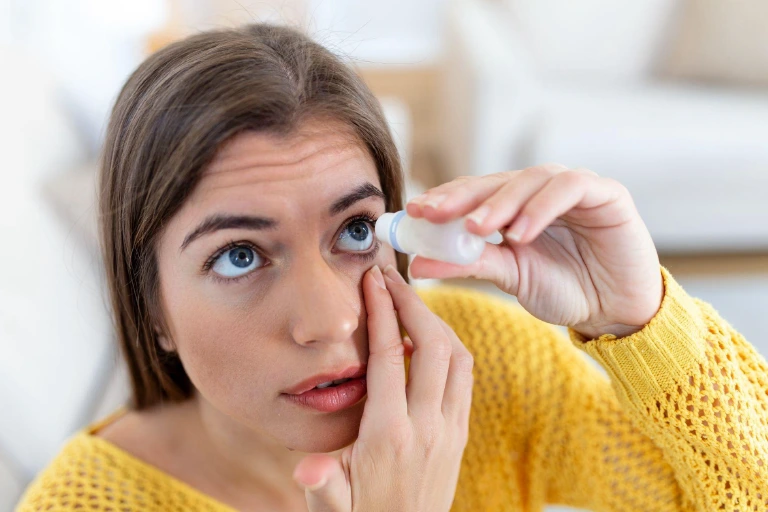
Summer Eyes: Understanding Dry Eye & Maintaining Healthy Vision
July is officially recognized as Dry Eye Awareness Month and also as Healthy Vision Month.
With the sun high, people spending more time outdoors, and the inevitable increase in screen time, it’s a perfect time to talk about how to protect your eyes—especially from dryness—and keep your vision strong all season long.
What is Dry Eye Disease?
Dry eye disease (DED) happens when your eyes don’t make enough tears, or the tears are poor in quality and evaporate too fast. That leads to discomfort, blurry vision, light sensitivity, and can even damage the eye’s surface if untreated.
Who’s at Greater Risk?
Some people are more likely to suffer from dry eyes, including:
- Those over 50 years old
- Women (especially during hormonal changes like menopause)
- Contact lens wearers
- People in dry, windy, or smoky environments
- Those who spend long hours staring at screens without breaks
Summer & Dry Eye: Why It’s Worse in July
Several factors make dry eye symptoms tend to worsen during summer:
- Increased exposure to sun, wind, and dry air (air conditioning too!) that speed up tear evaporation.
- More time outdoors, in water (pools or beaches) or dusty / windy settings.
- Longer screen use, perhaps because of more travel, summer work, or increased streaming.
Tips for Relief & Prevention
Here are some practical steps to ease dry eye and maintain healthy vision this summer:
- Use artificial tears or lubricating eye drops (non-prescription) to replace or supplement your natural tears.
- Maintain eyelid hygiene. Gentle cleaning of eyelids, especially if there’s crusting, blocked eyelid glands, or oily eyelids can help.
- Humidify your environment. If indoors (especially with AC or fans running), a humidifier helps slow dryness.
- Protect your eyes outdoors. Wear wraparound sunglasses, a wide-brimmed hat; avoid direct wind.
- Take breaks from screens. Use the 20-20-20 rule: every 20 minutes, look at something 20 feet away for 20 seconds. Blink often. Adjust screen brightness / contrast.
- Stay hydrated & manage health. Drink plenty of water. If you have health conditions (like autoimmune diseases) or take medicines that can dry eyes, talk to your doctor or eye care provider.
Healthy Vision Habits for Long-Term Eye Health
Beyond treating dryness, Healthy Vision Month reminds us that caring for our eyes is an ongoing effort. Some habits to adopt:
- Have a comprehensive dilated eye exam at least once a year, or more often if you have risk factors.
- Eat a diet with nutrients good for the eyes: leafy greens, fish rich in omega-3, perhaps foods rich in lutein/zeaxanthin.
- Wear UV-blocking sunglasses whenever outside. UV exposure over time contributes to cataracts, photokeratitis, and other eye damage.
- Avoid smoking, manage systemic health issues (like diabetes, high blood pressure). These often affect eye health.
When to See an Eye Care Professional
If any of these happen, don’t wait:
- Persistent discomfort, burning, or pain in the eye
- Blurred vision that doesn’t clear with rest or artificial tears
- Light sensitivity, redness, or discharge
- Changes in vision (especially sudden ones)
Final Thoughts
Dry Eye Awareness Month and Healthy Vision Month are great reminders that many eye problems can be managed, prevented, or caught early. Small adjustments and regular care can make a big difference in comfort and vision.
If you’re dealing with dry eye symptoms, or just due for an eye check-up, we’re here to help. Let’s work together to make sure your vision stays clear and healthy—not just this summer, but year-round.




